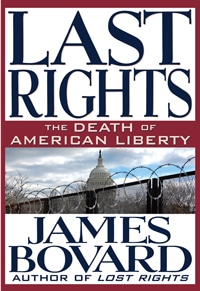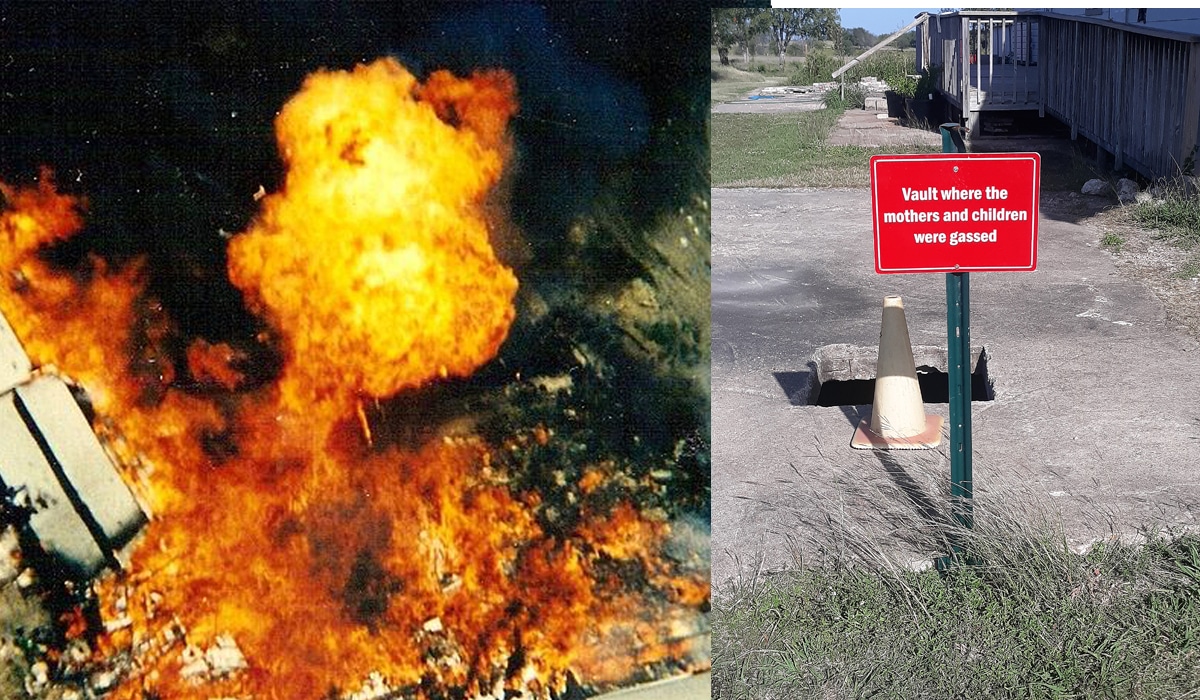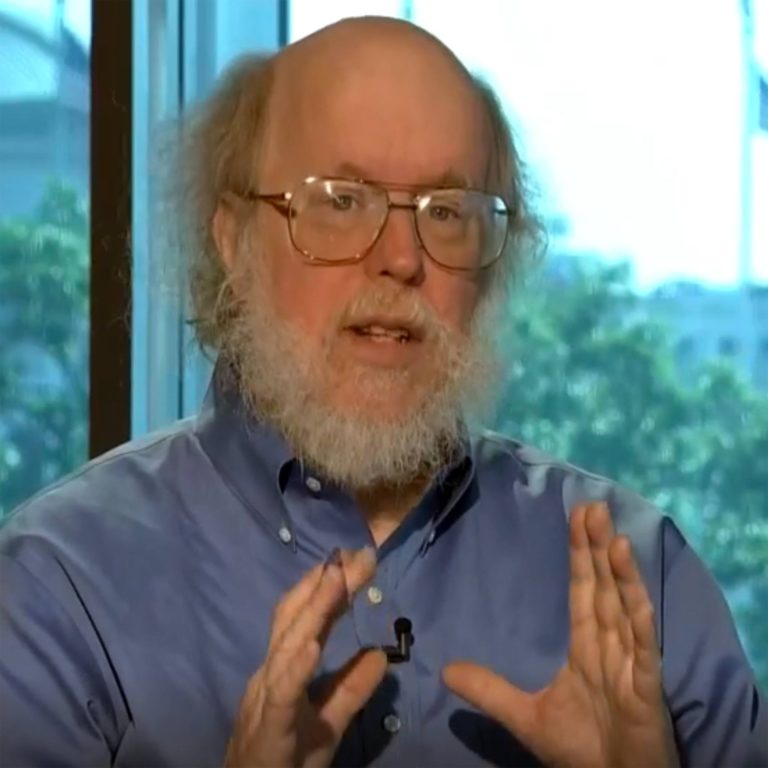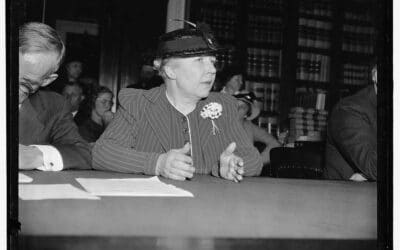After decades of writing about the greatest atrocity of 1993, I finally visited Waco last week. I was traveling with a friend who was hepped up on seeing Waco’s most popular tourist site—Magnolia, a massive shopping complex spawned by an HGTV program on home remodeling.
That venue was easy to spot thanks to its trademark giant silo in the downtown area. Having grown up in a farming area, I struggled mightily to comprehend how a silo could become a chic fashion symbol. The main building was overstocked with frenzied, middle aged women who would not be described as “bookish.” There was a surplus of henpecked husbands holding their wives’ purses. Prices seemed whackier than the customers: a burlap bag that looked like it had been used to feed horses sold for $68. Attaching the Magnolia insignia was the alchemist secret for turning crap into gold.
I didn’t need a feed bag so I told my friend I’d wait outside. I sat down on the opposite end of a bench from an amiable elderly lady who was savoring a $4 chocolate cupcake from the Magnolia bakery. She mentioned that she was on a bus tour.

“It’s the Brazos bus tour of Waco. We’re seen several fixer-upper houses that have been on the television program.”
“Did the bus stop at the site where the Branch Davidians died?”
“No, that wasn’t on the tour,” she replied.
“It’s amazing what the feds did to those people,” I commented.
“Sometimes it seems like the government just gets away with murder,” she sighed.
Holy smoke! At that moment, I realized I was no longer on the East Coast where everyone defers automatically to officialdom. Inside the Beltway, anyone who ever thinks about shooting back at federal agents is considered a terrorist.
“Yes…” I began.
“I’ve heard about the federal government doing other killings but I’m not sure if they were true or just rumors,” she added.
“Ruby Ridge wasn’t a rumor,” I replied.
At that point, my friend came bounding out of the store with a new Magnolia tote bag. (She was not one of the frenzied shoppers.) I wished the lady good luck for the rest of her Waco bus tour.
We headed off to the distant outskirts of Waco. An Uber driver in Dallas told me a couple days earlier that he had difficulty finding the site of the debacle and suggested that was because locals wanted to bury the entire issue. I cranked on WAZE. In lieu of searching for “federal atrocity sites in Central Texas,” I entered “Mt. Carmel, Waco.” WAZE came through with only a couple quirky surprises (“turn left in 37 feet”).
Turning off the main road, our rent-a-car came upon the fence surrounding the Davidian site (now owned by Adventist preacher Charles Pace). A sign on the fence announced that the area was closed. But the gate was open and another sign said that visitors were obliged to pay $10 per vehicle. I would have happily paid but I encountered no humans during the visit.
I wasn’t even sure about the only sign of life that I witnessed. There was a dog lying on the side of the road—I thought he might be dead. As I drove past, he lazily opened one eye. With such a robust response, I wondered if the dog worked for the government. He looked like a mix of an English Setter and Dalmatian, but his papers probably certified him as 100% Texas mutt. The dog ignored me like a bad editor.
This swath of land entered the history books on February 28, 1993, when federal agents attacked this sprawling home occupied by members of an offshoot of the Seventh Day Adventists, a Christian sect founded by a Bulgarian immigrant in 1935. Seventy-six Alcohol Tobacco and Firearms agents arrived on cattle trailers, shot the Davidians’ dogs, and then commenced trying to blast and smash their way into the house occupied by scores of women, children, and men. The ATF supposedly had an arrest warrant for Davidian leader David Koresh but forgot to bring it along that morning. ATF named its operation Showtime, and made sure that multiple crews from local television stations were nearby to film their triumph.
Things went awry, and the resulting firefight left seven Davidians and four federal agents dead. ATF top brass wailed to the media that their agents had been “ambushed” that morning. That characterization was difficult to reconcile with the facts that the feds launched a surprise assault and were far more heavily armed than the Davidians. Perhaps the feds considered it an “ambush” because the victims shot back.
The ATF targeted Koresh because they suspected he had illegally converted semi-automatic firearms to shoot more than one bullet with each trigger pull. Prior to attacking, the feds had scorned numerous opportunities to easily arrest Koresh. Nine days before the attack, undercover ATF agents (whom Koresh recognized as such) had even gone target shooting with Koresh. But that damning fact was buried in federal archives until years after the catastrophe.
After the ATF raid fiasco, the FBI took over and ratcheted up the pressure on the besieged Davidians, bombarding them around the clock with high volume soundtracks of rabbits being slaughtered and Nancy Sinatra singing (choose your poison). On April 19, 1993, FBI tanks pumped the Davidians’ home full of CS gas, a potentially lethal, flammable compound and collapsed much of the building atop the inhabitants. Around noon, fires broke out that quickly burnt the compound to the ground; 80 bodies were found in the rubble. FBI spokesmen raced to blame the Davidians for the fire and swore they had proof that the cult members committed mass suicide. (No such evidence was provided.) The spokesmen neglected to mention that the FBI had stopped local fire trucks racing to the scene.
I was enraged by the attack and the smugness of government spokesmen before, during, and after the fire—and by the lapdog media. I lusted to write about the abuses when they happened but I was dangling at the end of my rope trying to finish Lost Rights: The Destruction of American Liberty (St. Martin’s Press). I had approximately 17,619 remaining details to track down or lock up in the manuscript. I did finagle the insertion of a few pages on Waco at the last moment of the book’s preparation, perhaps earning the undying wrath of the copy editor. I later wrote about Waco for The Wall Street Journal, Playboy, New Republic, American Spectator, Washington Times, and other publications.
Walking the turf that I had often written about was borderline eerie. It was hard to visualize that, thirty years earlier, National Guard military helicopters had flown above an American home, spraying gunfire on the hapless residents. Waco was several wars and hundreds of battles ago, as far as topics that I had investigated and sought to expose. It was difficult to even conceive of a time before my name was added to terrorist watch lists. But Waco was a landmark for both the nation and for my own thinking and writing.
The feds quickly bulldozed the site even before the fires had cooled in April 1993. The biggest remainder from that time is the swimming pool that had been located in the back of the ramshackle home. That pool shows up in the overhead photos of the final day’s tank assault.
The most piercing memento was a simple red sign atop a three foot post: “Vault where the mothers and children were gassed.” The “vault” was the bottom story of a four story tower, specially designed for apocalyptic times. Almost thirty corpses of women and children were found there after the FBI assault.
The initial coverup of Waco was a roaring success, at least until the April 19, 1995 Oklahoma City bombing put the issue back on the national radar. Republicans had captured control of Congress in the 1994 midterm elections and two House committees held joint hearings in the summer of 1995.
The Clinton administration and their media allies portrayed federal agencies as heroic for their conduct at Waco. But the details of the FBI gassing operation settled any doubts about federal intent on April 19, 1993.
During the 1995 hearings, congressional Democrats portrayed the CS gas as innocuous as a Flintstone vitamin. FBI deputy director Floyd Clarke testified that the FBI’s plan was to “immediately and totally immerse the place in gas and throw in flash-bangs which would disorient them…and cause people to…think, if not rationally, at least instinctively, and perhaps give them a way to come out.” The FBI assumed that maximizing terror inside the building would make people come out and surrender to the government. But a 1975 U.S. Army publication warned, “Generally, persons reacting to CS are incapable of executing organized and concerted actions, and excessive exposure to CS may make them incapable of vacating the area.” Shortly before she approved the FBI final assault, Attorney General Janet Reno was warned that CS gas could cause “some people to panic. Mothers may run off and leave infants.”
CS gas is deadly. United Nations officials estimated that CS gas killed dozens of Palestinians in the Gaza Strip in 1988. Benjamin Garrett, executive director the Chemical and Biological Arms Control Institute in Alexandria, Virginia, observed that the CS gas “would have panicked the children. Their eyes would have involuntarily shut. Their skin would have been burning. They would have been gasping for air and coughing wildly. Eventually, they would have been overcome with vomiting in a final hell.” Many areas of the Davidians’ residence were saturated with doses of CS and methyl chloride that were nearly double the levels considered “an immediate risk to life and health.”
Chemistry professor George Uhlig testified that the gassing may have turned the poorly ventilated area where many of the children’s bodies were found “into an area similar to one of the gas chambers used by the Nazis at Auschwitz.” Uhlig concluded that the CS gasses probably “suffocated the children early on” in the FBI assault. Rep. Steven Schiff (R-NM) declared that “no rational person can conclude that the use of CS gas under any circumstances against children, would do anything other than cause extreme physical problems and possibly death…I believe the deaths of dozens of men, women and children can be directly and indirectly attributable to the use of this gas in the way it was injected by the FBI.” Committee Chairman John Mica (R-FL) told me that even if the children didn’t die directly from the CS gas, “we sure as hell tortured them for six hours before they died.” A few months before the April assault, U.S. government officials signed an international Chemical Weapons Convention treaty pledging never to use CS gas against enemy soldiers. But the treaty contained an exemption that permitted governments to use CS on their own subjects.
The FBI exploited that exemption to target the women and children. On the day of the fire, FBI spokesman Bob Ricks declared, “We knew that that protection [area] was in there — we believe we were finally able to make entry into that compound and were able to insert gas inside that protective area” where the women and children were huddled (quoted in the movie Waco: The Rules of Engagement, at two hours and eight minutes). The FBI knew that there were no gas masks that fit children, and Ricks also declared, “we put massive gas in there — their gas masks by that time had to be failing. ” But the feds remained entitled to brutalize and/or kill the Davidians because no one can disobey Uncle Sam and live. And any resulting deaths were not murder — merely public service gone awry.
At the front of Mt. Carmel is a plaque listing the names and ages of people killed on April 19, 1993. That plaque was practically the only remembrance for the 18 children who perished that day.
As we prepared to vamoose, a mockingbird arrived and perched on that red sign. Mockingbirds symbolize innocence and rebirth, so maybe there was a positive message from the visit. My friend told me that she felt like there were ghosts on the site. But she is Celtic so she often senses ghosts around her. After returning home, I glanced at a Wall Street Journal piece I wrote before the 1995 hearings and saw a similar invocation: “The ghosts of Waco will continue to haunt the U.S. government until the truth is told about what the government did and why.”
Waco still haunts the feds because the cover-up continues. Waco vaccinated millions of Americans against ever blindly deferring to Washington and federal law enforcement. The lives lost at Waco were never recovered, but the same is true of federal legitimacy—at least in the eyes of legions of Americans.
You can find all my articles related to Waco at this link.
Libertarian Institute Director Scott Horton produced a superb thirteen-hour podcast on Waco earlier this year, featuring lengthy interviews with heroic investigators such as David Hardy and Dan Gifford. Check out his podcast here.
The Institute will also be publishing my forthcoming book Last Rights: The Death of American Liberty, a continuation of its 1995 precursor.
















